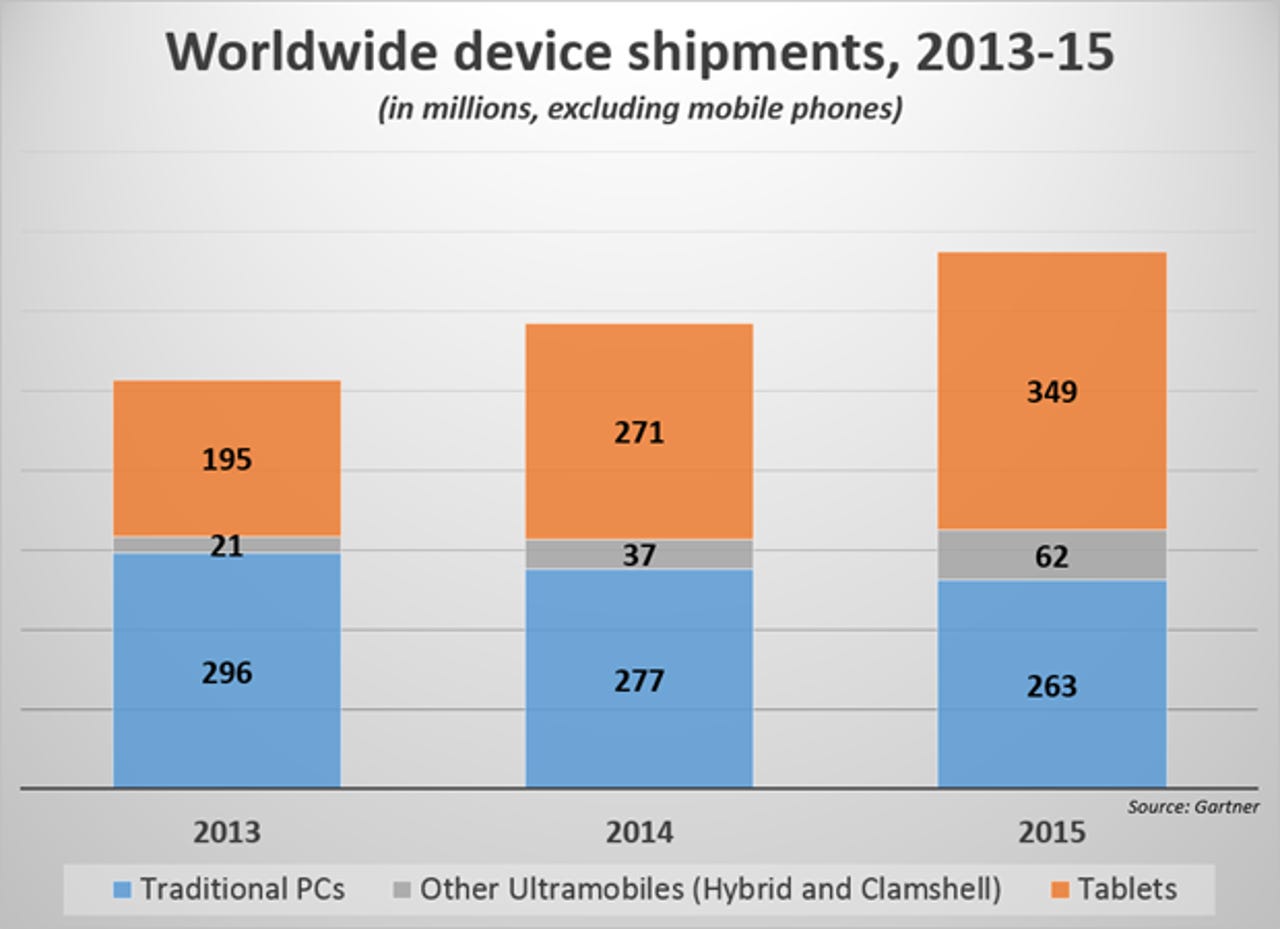As iPad sales slow, hybrid PCs begin to find a foothold

If you’re in the iPad business, I have good news and bad news for you.
The good news is that consumers and business buyers are increasingly treating iPads as highly mobile PCs, capable of performing serious business tasks.
The bad news is that the market is also treating iPads just like PCs, which is why in the just-concluded quarter Apple’s iPad business dropped sharply, with shipments down 16 percent year over year. That was a nasty downside surprise even to the pros; in a survey by Fortune’s Philip Elmer-DeWitt, 33 of 34 analysts predicted sales that were higher than the actual total. On average, those analysts were off by more than 16 percent.
But there’s really nothing wrong with the iPad business, just as there’s nothing fundamentally wrong with the PC business. What’s happening instead is that the definition of the PC – essentially any computing device that’s too big to fit in the pocket – is shifting to encompass more and more form factors.
I’ve criticized Gartner’s analyses before, but their PC sales numbers are generally solid, especially in the near term. And a Gartner report from last month has encouraging news for anyone who wants to adopt an expansive definition of PC that also includes tablets and hybrid devices.

These days, tablets are PCs. Microsoft endorsed the iPad as a serious business device with its introduction of Office for iPad, which has been, by all accounts, a tremendous success.
Of course, people are still buying hundreds of millions of conventional desktop and notebook PCs every year as well. The numbers have dipped slightly year over year, but there’s no evidence that PC sales are going to fall off a cliff anytime soon.
And, most fascinating of all, the market is finally beginning to awaken to the possibility that you can combine a tablet and a PC in the same hardware package. Microsoft calls these hybrid devices; Intel calls them “2-in-1s.” But whatever you call them, sales appear to be picking up.
Tech Pro Research
Tablet sales are still growing, although the rate of growth is slowing. Conventional PC sales are still declining, although the rate of decline is modest.
But those hybrid and ultramobile devices, which are essentially PCs with detachable keyboards, are the fastest growing group of all, with sales poised to triple between 2013 and 2015.
These days, that slice in the middle is where most of the innovation is happening. Tablets have become fairly predictable, with Apple delivering increasingly refined versions of the same basic design in two different sizes, while Android makers are fighting to see who can make the cheapest, most generic designs. In the conventional PC market, the vast majority of devices sold are cookie-cutter images of the same designs that have been popular for a decade. Faster, lighter, thinner, but not really all that different.
Those hybrid designs, on the other hand, are genuinely different, with every PC maker (including Microsoft) experimenting with the form factor. And imagine what those sales numbers would look like if Microsoft hadn’t fumbled the launch of Windows 8 and then spent two years (and counting) making it right.
Given the growth curve, there’s no question that PC makers will keep iterating on these “now it’s a PC, now it’s a tablet” designs. That leaves a single big question: When will Apple combine a MacBook and an iPad into a single device? Judging by the number of Apple customers who carry both devices, you know the demand is there.